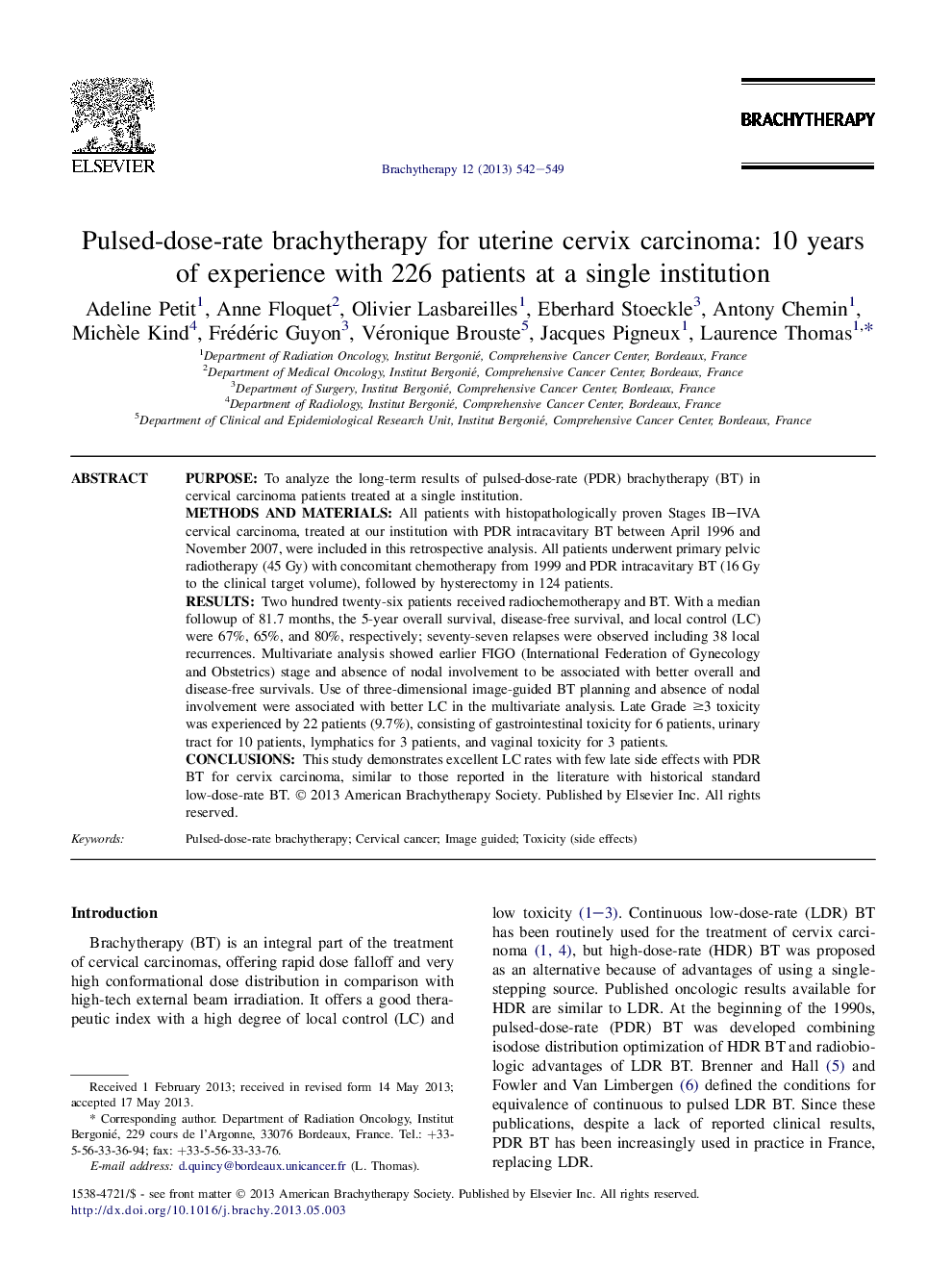| Article ID | Journal | Published Year | Pages | File Type |
|---|---|---|---|---|
| 6189698 | Brachytherapy | 2013 | 8 Pages |
PurposeTo analyze the long-term results of pulsed-dose-rate (PDR) brachytherapy (BT) in cervical carcinoma patients treated at a single institution.Methods and MaterialsAll patients with histopathologically proven Stages IB-IVA cervical carcinoma, treated at our institution with PDR intracavitary BT between April 1996 and November 2007, were included in this retrospective analysis. All patients underwent primary pelvic radiotherapy (45 Gy) with concomitant chemotherapy from 1999 and PDR intracavitary BT (16 Gy to the clinical target volume), followed by hysterectomy in 124 patients.ResultsTwo hundred twenty-six patients received radiochemotherapy and BT. With a median followup of 81.7 months, the 5-year overall survival, disease-free survival, and local control (LC) were 67%, 65%, and 80%, respectively; seventy-seven relapses were observed including 38 local recurrences. Multivariate analysis showed earlier FIGO (International Federation of Gynecology and Obstetrics) stage and absence of nodal involvement to be associated with better overall and disease-free survivals. Use of three-dimensional image-guided BT planning and absence of nodal involvement were associated with better LC in the multivariate analysis. Late Grade â¥3 toxicity was experienced by 22 patients (9.7%), consisting of gastrointestinal toxicity for 6 patients, urinary tract for 10 patients, lymphatics for 3 patients, and vaginal toxicity for 3 patients.ConclusionsThis study demonstrates excellent LC rates with few late side effects with PDR BT for cervix carcinoma, similar to those reported in the literature with historical standard low-dose-rate BT.
